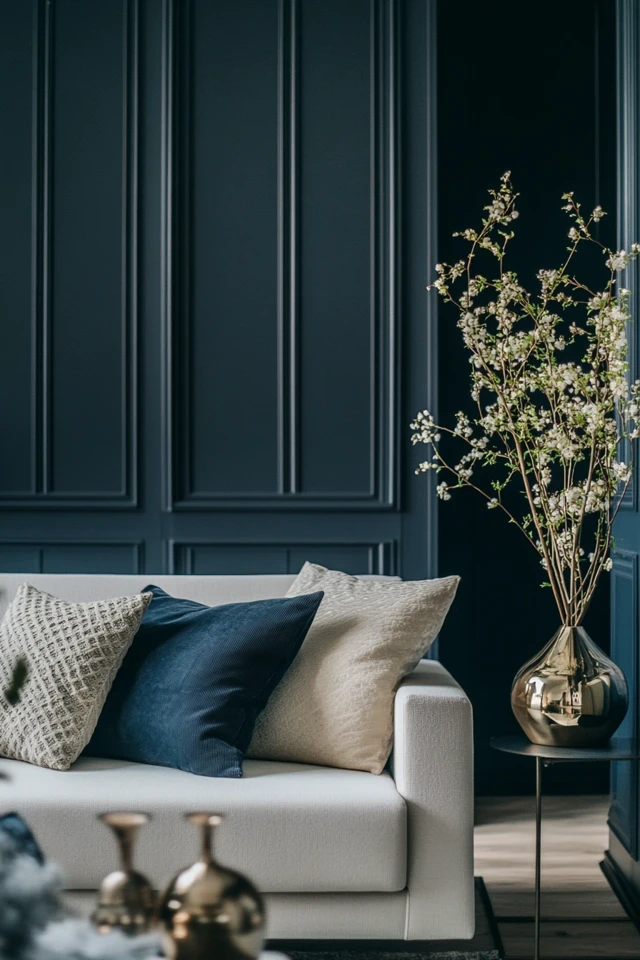Introduction
Monochromatic design is a timeless and elegant approach to decorating your home. By focusing on one color and its variations, you can create a cohesive and calming space that feels both sophisticated and inviting. Far from being boring, a monochromatic palette allows you to explore depth, texture, and contrast in unique ways that highlight your personal style.
I fell in love with monochromatic design when I redecorated my bedroom in shades of gray. At first, I was hesitant—it felt like limiting myself to one color might be too restrictive. But as I layered different tones, added textured fabrics, and included metallic accents, the room came alive. It felt serene, polished, and incredibly intentional. That experience showed me that with the right techniques, a monochromatic space can be anything but plain.
If you’re ready to embrace the beauty of a single-color scheme, this guide will show you how to master the monochromatic look. From choosing the right color to layering tones and adding interest, let’s explore how to create a home that’s cohesive, stylish, and effortlessly chic.
Why Monochromatic Design Works
Monochromatic design simplifies the color palette, creating a sense of harmony and balance in your space. Here’s why it’s so effective:
- Cohesion: Using variations of a single color creates a unified and visually pleasing look.
- Easy to Style: With one primary color, it’s easier to make design decisions and avoid clashing elements.
- Versatility: Monochromatic schemes work in any room, from minimalist kitchens to cozy living rooms.
- Timeless Appeal: This approach transcends trends, making it a lasting choice for home decor.
Why These Key Elements Work So Well Together
Tonal Variations
Using lighter and darker shades of the same color adds depth and dimension, preventing the space from feeling flat.
Textures and Patterns
Incorporating different textures, like velvet, linen, or wood, enhances the visual and tactile appeal of a monochromatic design.
Accent Materials
Metallics, glass, or natural materials like wood or stone provide subtle contrast without breaking the cohesive color scheme.
Evidence-Based Design
Studies show that harmonious spaces reduce stress and promote relaxation. A monochromatic palette creates a calming and grounded environment.
The Best Tips for Creating a Monochromatic Look at Home
1. Choose Your Base Color
- Select a color that reflects the mood you want to create. Blues and greens are calming, while warm tones like beige or terracotta feel cozy.
- Consider the room’s lighting—cool tones work well in bright, naturally lit spaces, while warmer hues suit dimmer areas.
- Pro Tip: Test swatches of your chosen color in different lighting to see how it changes throughout the day.
2. Layer Tones and Shades
- Use multiple shades of your base color to add depth. For example, pair light gray walls with medium-gray furniture and charcoal accents.
- Include both light and dark tones to create contrast and keep the space dynamic.
- Pro Tip: Stick to a three-shade rule—one light, one medium, and one dark tone—to ensure balance.
3. Incorporate Textures
- Mix materials like soft velvet, rough jute, smooth leather, or glossy ceramics to add interest and dimension.
- Use textiles like rugs, curtains, and throw pillows to create a cozy, layered effect.
- Pro Tip: Stick to monochromatic textures to maintain cohesion while adding variety.
4. Add Patterns Sparingly
- Use subtle patterns, like tone-on-tone stripes or geometric designs, to enhance the space without overwhelming the palette.
- Incorporate patterned rugs, cushions, or wallpaper that stay within the monochromatic scheme.
- Pro Tip: Balance patterns with solid-colored elements to keep the look grounded.
5. Introduce Metallics and Neutrals
- Add metallic accents, like gold or brushed nickel, to provide a touch of contrast while staying neutral.
- Use white, black, or natural wood as grounding elements to prevent the room from feeling too monochromatic.
- Pro Tip: Keep metallics minimal to avoid disrupting the harmony of the color scheme.
6. Play With Scale and Proportion
- Incorporate furniture and decor in varying sizes to create visual interest.
- Use large statement pieces, like a monochromatic sofa, paired with smaller accents, like vases or lamps.
- Pro Tip: Avoid overcrowding the space—negative space is crucial in monochromatic design.
7. Focus on Lighting
- Use layered lighting, such as ceiling fixtures, floor lamps, and wall sconces, to highlight different elements of the room.
- Consider colored lighting, like warm-toned bulbs, to enhance the base color’s warmth or coolness.
- Pro Tip: Avoid harsh white light that can wash out your color scheme.
8. Incorporate Natural Elements
- Add greenery, like potted plants or dried branches, to bring life and organic contrast to the monochromatic design.
- Use natural materials, like stone or wood, that complement your chosen color without overpowering it.
- Pro Tip: Stick to neutral-toned plants, like gray-green succulents, for a cohesive look.
9. Style With Monochromatic Accessories
- Choose decor items, like vases, books, or artwork, in varying tones of your base color.
- Group similar items together for a curated, intentional look.
- Pro Tip: Use negative space to highlight key pieces rather than overcrowding surfaces.
10. Experiment With Unexpected Applications
- Extend your monochromatic palette to ceilings, doors, or even furniture for a bold, cohesive look.
- Consider painting trim and moldings in the same color as the walls for a seamless effect.
- Pro Tip: Monochromatic ceilings can make the room feel larger and more enveloping.
Picture Gallery
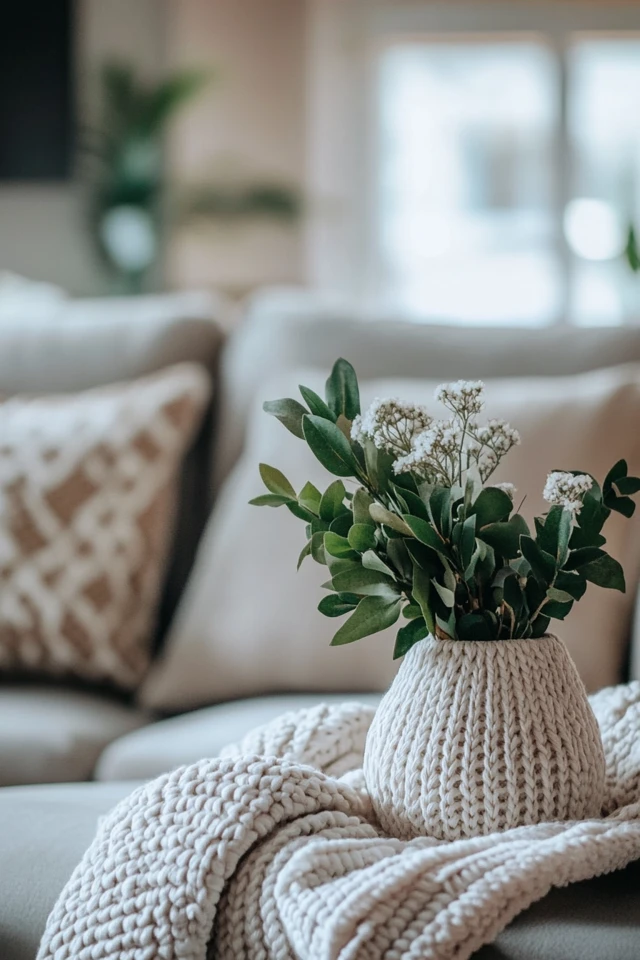

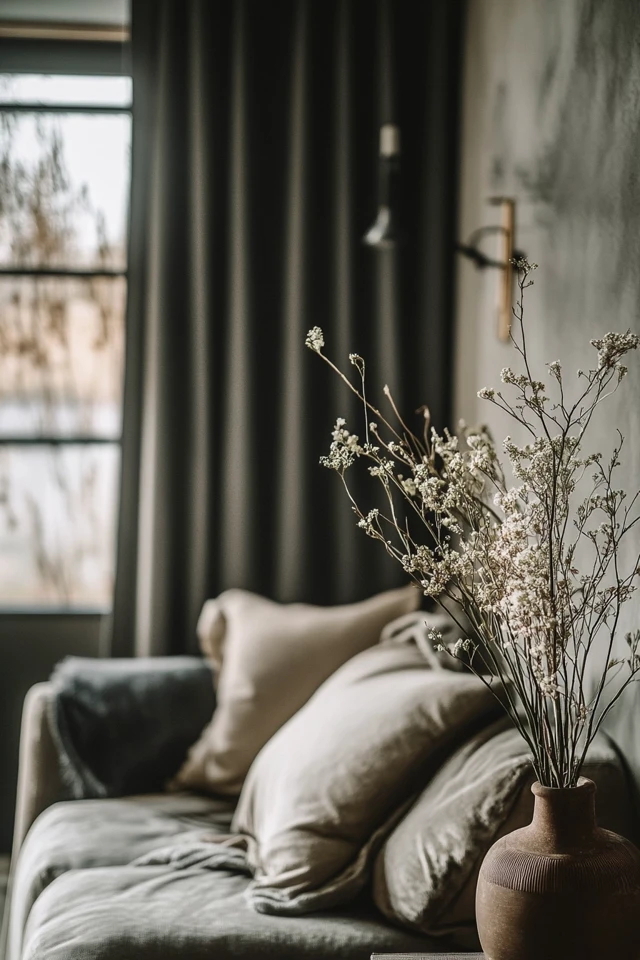
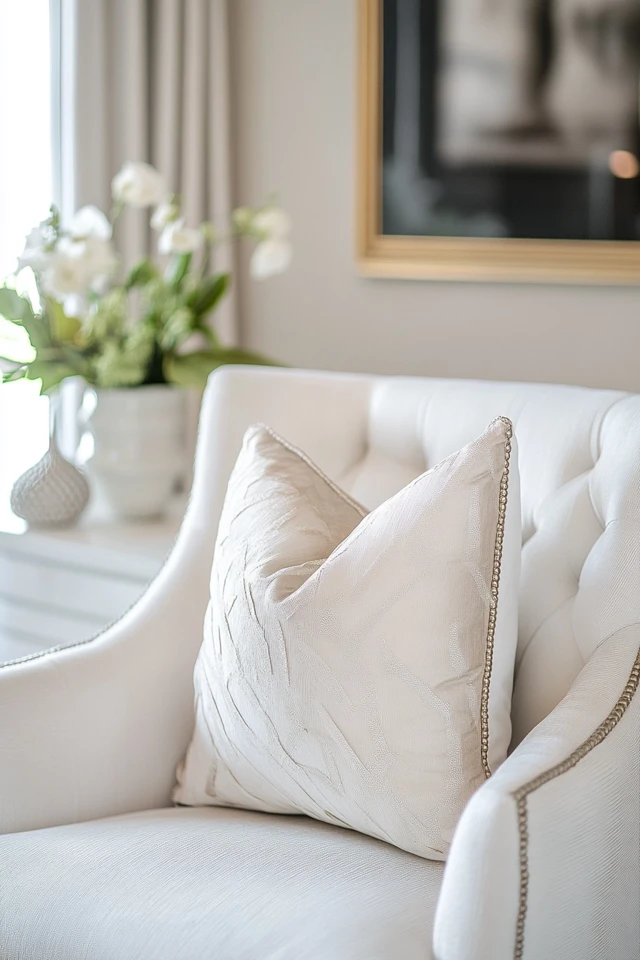
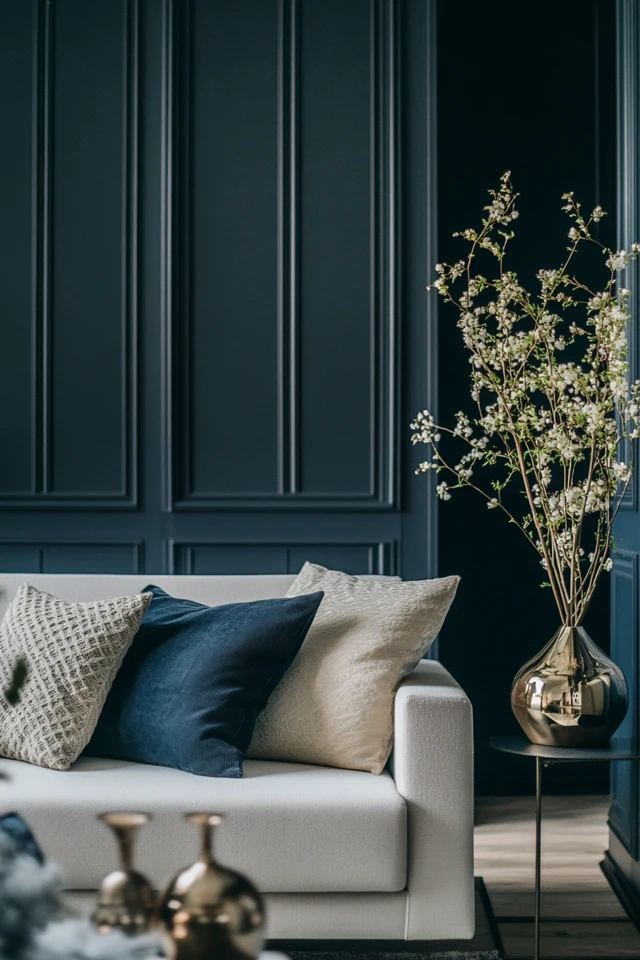
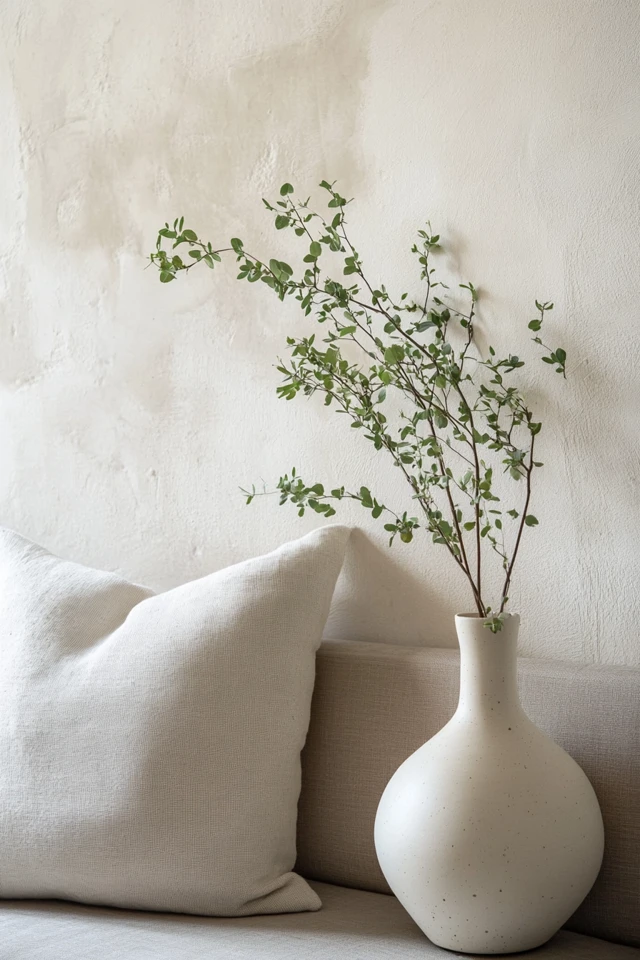
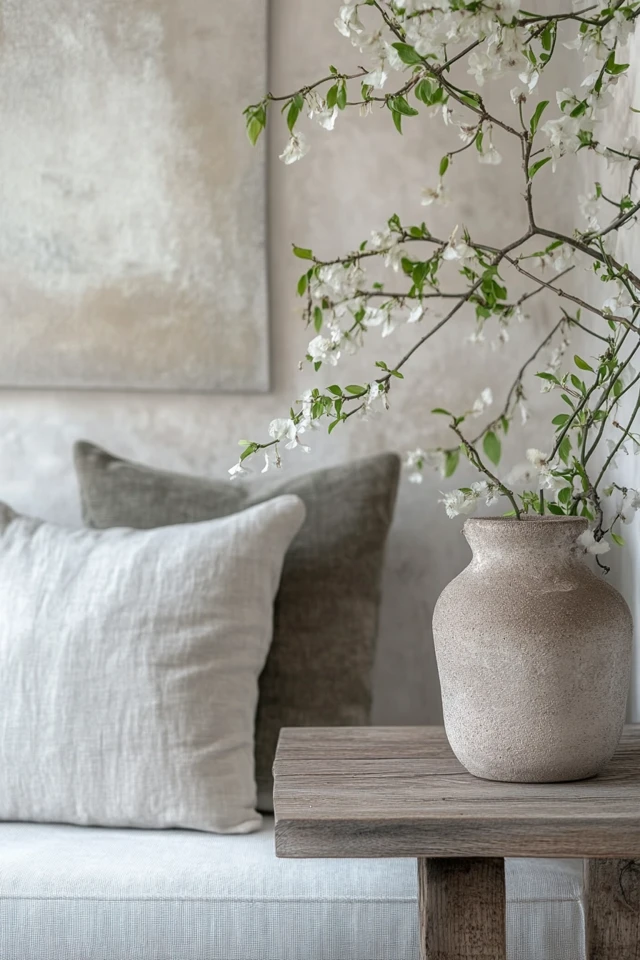
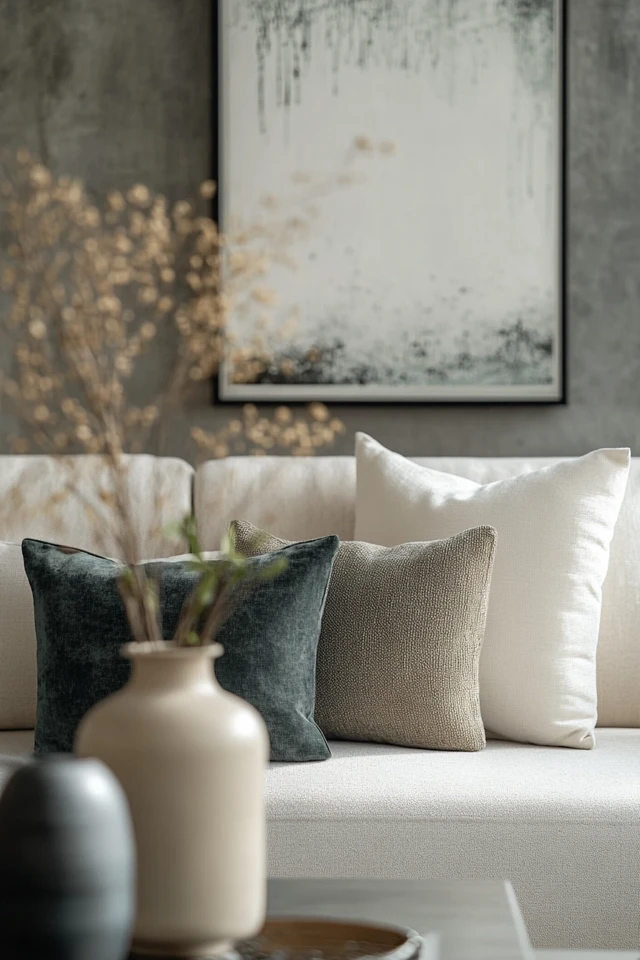
FAQ Section
1. Can I use monochromatic design in small spaces?
Yes! A monochromatic palette can make small rooms feel more open and cohesive. Use lighter tones to enhance brightness.
2. How do I keep a monochromatic space from feeling flat?
Layer textures, incorporate tonal variations, and add subtle accents like metallics or natural elements for depth.
3. What colors work best for monochromatic design?
Neutrals like gray, beige, and white are timeless choices, but bold hues like navy, emerald green, or blush pink can also work beautifully.
4. Can I mix different finishes in a monochromatic design?
Absolutely! Mixing matte, glossy, and textured finishes adds interest and dimension while maintaining the color scheme.
5. How do I incorporate artwork into a monochromatic space?
Choose art pieces that feature your base color or use black-and-white artwork for a minimalist touch.
Variations
- Minimalist Monochrome: Stick to clean lines, neutral tones, and simple shapes for a pared-down, modern look.
- Rustic Monochrome: Combine earthy tones with natural textures like wood, stone, and woven fabrics for a cozy, organic vibe.
- Glam Monochrome: Use jewel tones with metallic accents and luxurious materials like velvet for a dramatic, upscale aesthetic.
How to Showcase It
Living Room
Use a tonal rug, a monochromatic sofa, and matching throw pillows to create a cozy, cohesive space. Add metallic accents like a brass lamp or framed mirror for contrast.
Bedroom
Layer bedding in different shades of your chosen color, add a textured headboard, and style nightstands with monochromatic decor.
Kitchen
Paint cabinets, walls, and trim in varying shades of the same color. Use sleek, neutral hardware and lighting to maintain the look.
Bathroom
Incorporate tiles, towels, and accessories in the same color family for a spa-like retreat.
Occasions to Feature It
- Home Renovations: Highlight the timeless elegance of monochromatic design during a room makeover or full remodel.
- Seasonal Updates: Use your chosen base color to incorporate seasonal accessories or textures for an updated look.
- Everyday Living: Enjoy the serene, cohesive beauty of a monochromatic home year-round.
Conclusion
Creating a monochromatic look at home is all about balance, texture, and tonal variation. By focusing on one color and exploring its many shades and applications, you can design a space that feels harmonious, stylish, and uniquely yours. Whether you’re refreshing a single room or transforming your entire home, monochromatic design offers endless possibilities for timeless elegance.
Now it’s your turn—choose a color that inspires you, experiment with textures and accents, and bring your monochromatic vision to life. Share your results and inspire others to embrace this chic and versatile design style!

